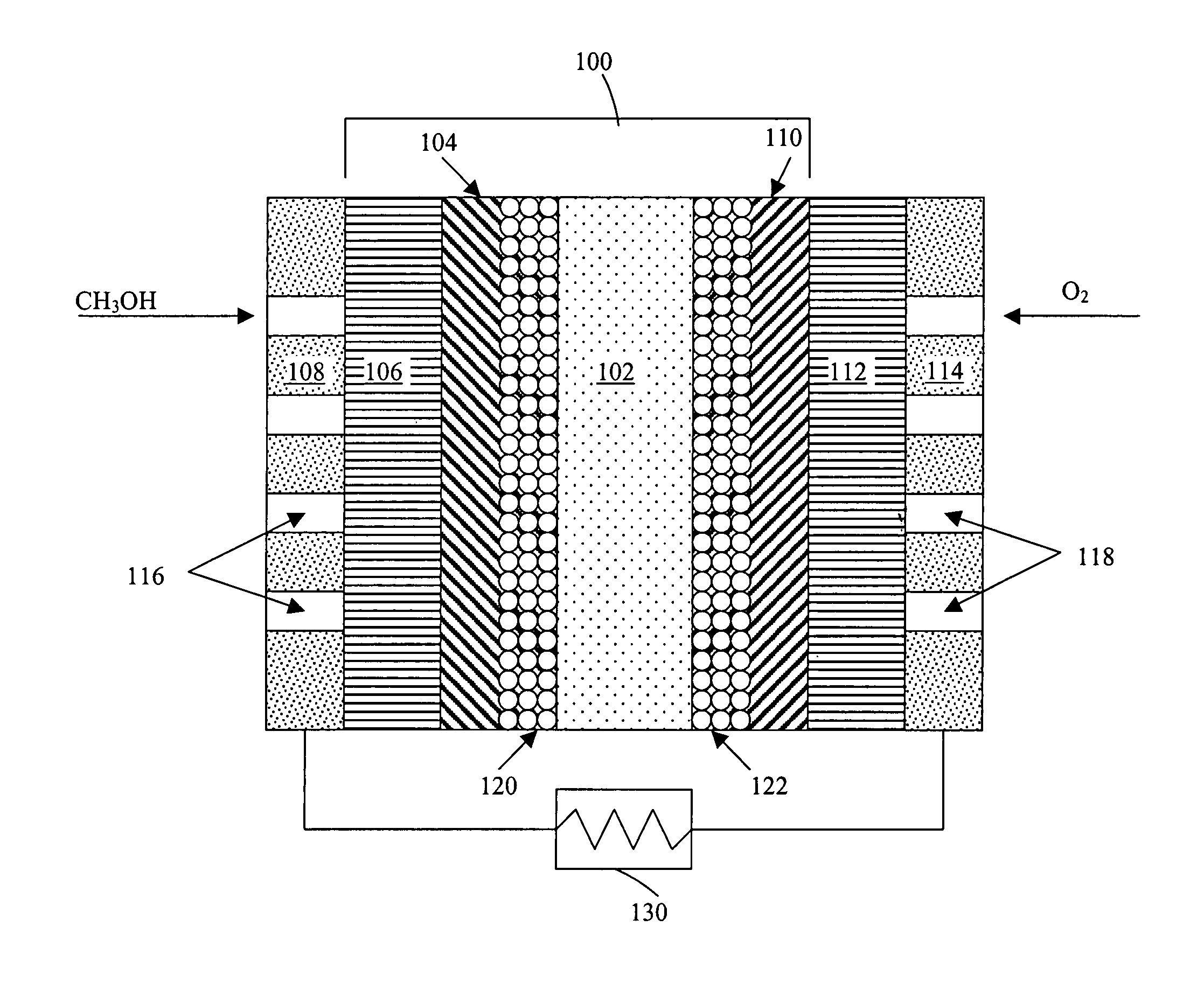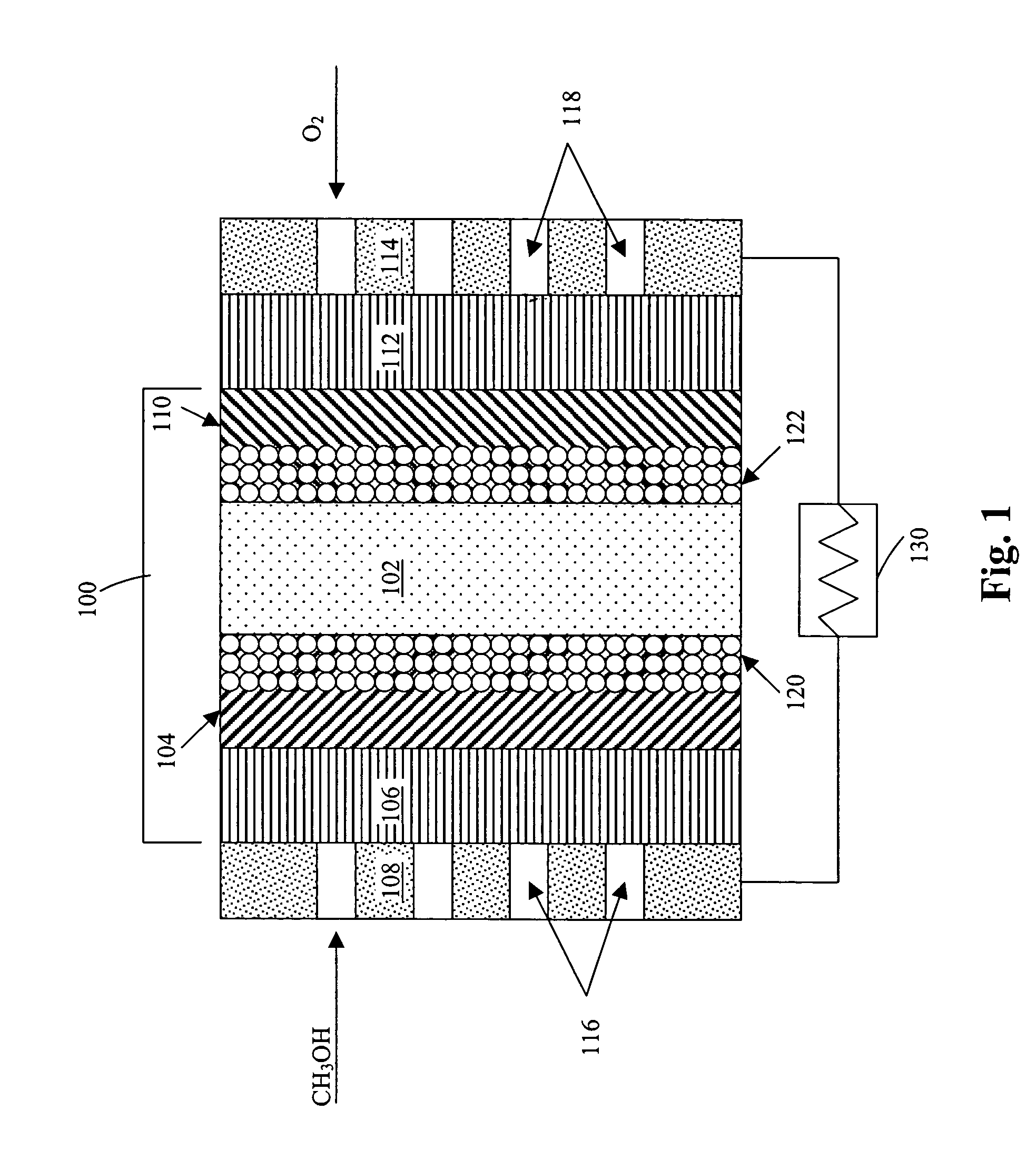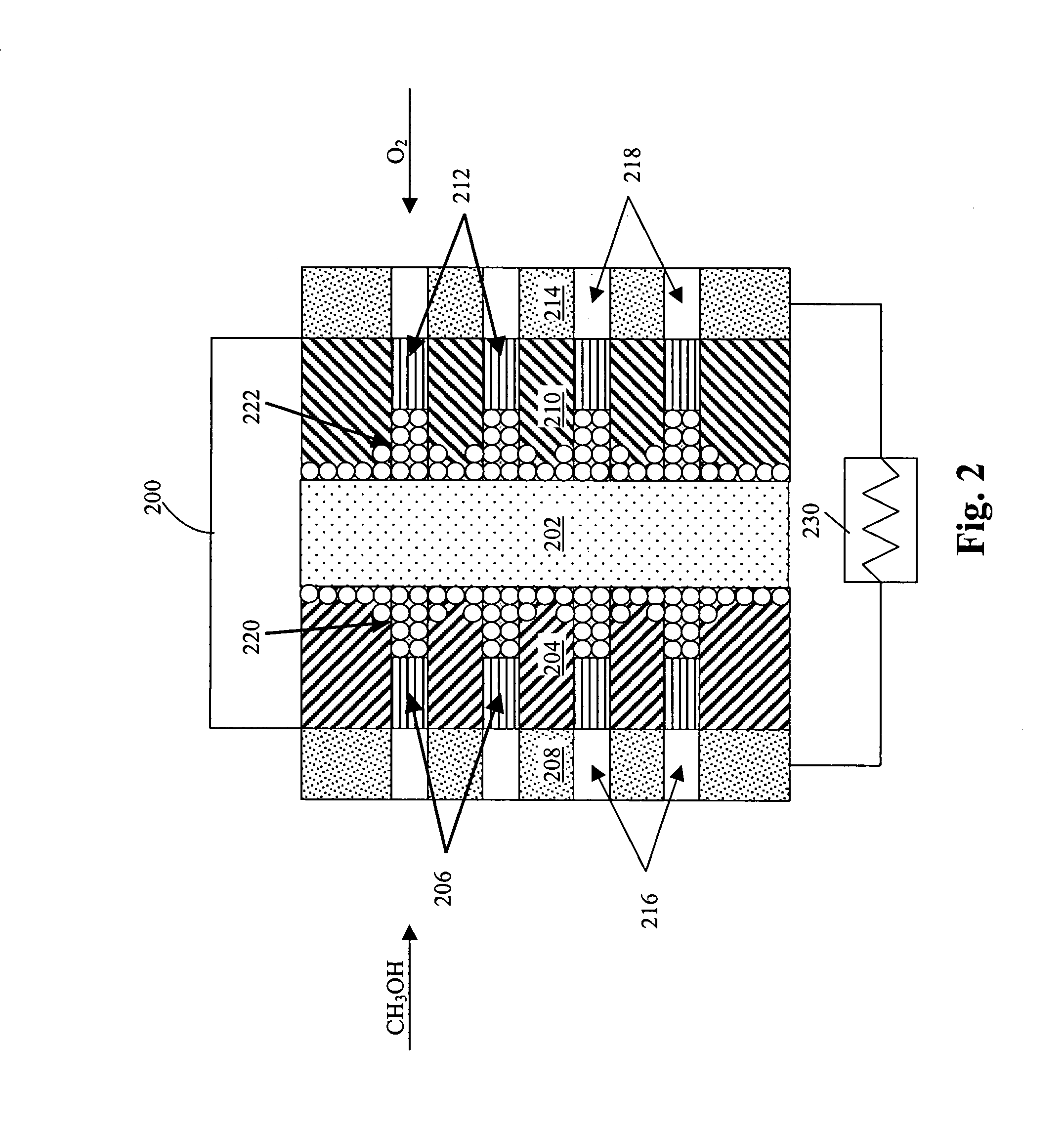Method of producing membrane electrode assemblies for use in proton exchange membrane and direct methanol fuel cells
a technology of proton exchange membrane and fuel cell, which is applied in the direction of catalyst activation/preparation, metal/metal-oxide/metal-hydroxide catalyst, etc., can solve the problems of increasing the cost of cell components, cell performance and operating life, and the difficulty of producing commercially viable fuel cells, etc., to achieve the effect of improving performan
- Summary
- Abstract
- Description
- Claims
- Application Information
AI Technical Summary
Benefits of technology
Problems solved by technology
Method used
Image
Examples
examples
[0333]In the present specification, TEFLON (E.I. duPont de Nemours, Wilmington, Del.) refers to a hydrophobic polymer, more specifically a tetrafluoroethylene fluorocarbon polymer. NAFION (E.I. duPont de Nemours, Wilmington, Del.) refers to a hydrophobic and proton-conducting polymer, specifically a sulfurated perfluorohydrocarbon polymer.
[0334]The description and examples also make reference to various forms of carbon by reference to trade names. The general properties of these carbon supports are listed in Table 3. SHAWINIGAN BLACK is an acetylene black available from Chevron Chemical Co., Houston, Tex. KETJENBLACK is available from Akzo Nobel, Amersfoort, Netherlands. VULCAN XC-72 is a furnace black available from Cabot Corp., Alpharetta, Ga., and is also available in graphitized form. PWA is an activated carbon available from Calgon Carbon Corp., Pittsburgh, Pa.
[0335]
TABLE 3Carbon Blacks used as Catalyst SupportsParticle SizeCarbon Source(micrometers)BET Surface Area (m2 / g)SHAWI...
example
Graded Hydrophobicity Layers
[0390]A number of graded hydrophobicity layers were produced in accordance with the present invention. In a first example, a single layer of TEFLON-modified carbon was printed on top of an electrocatalyst layer, the other side of the electrocatalyst layer interfacing the electrolyte. The TEFLON-modified carbon layer consisted of 35 wt. % TEFLON and 65 wt. % SHAWINIGAN BLACK. The average thickness of the layer was 90 μm and the loading of the TEFLON-modified carbon was about 2.5 mg / cm2. The ink composition consisted of SHAWINIGAN BLACK, TEFLON particles, surfactants and water. The printed layer was then subjected to roll pressing and the sample was heated at 300° C. for 5 minutes to drive out surfactants used in the ink composition.
[0391]In a second example, two 50 μm thick sublayers of TEFLON-modified carbon were printed on top of an electrocatalyst layer, the other side of the electrocatalyst layer interfacing the electrolyte. The first sublayer of TEFLO...
PUM
| Property | Measurement | Unit |
|---|---|---|
| temperature | aaaaa | aaaaa |
| viscosity | aaaaa | aaaaa |
| viscosity | aaaaa | aaaaa |
Abstract
Description
Claims
Application Information
 Login to View More
Login to View More - R&D
- Intellectual Property
- Life Sciences
- Materials
- Tech Scout
- Unparalleled Data Quality
- Higher Quality Content
- 60% Fewer Hallucinations
Browse by: Latest US Patents, China's latest patents, Technical Efficacy Thesaurus, Application Domain, Technology Topic, Popular Technical Reports.
© 2025 PatSnap. All rights reserved.Legal|Privacy policy|Modern Slavery Act Transparency Statement|Sitemap|About US| Contact US: help@patsnap.com



